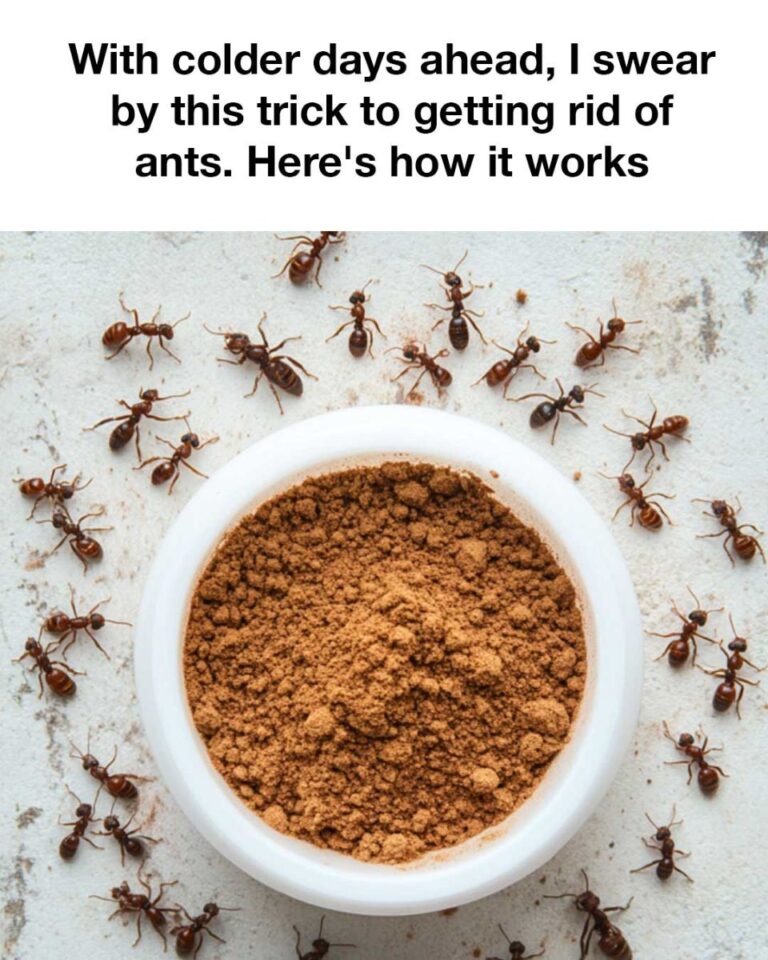Materials Needed for the DIY Ant Solution
To create this DIY ant solution, you will need the following materials: borax, sugar, water, cotton balls, and small containers or lids. Borax can be found in the laundry aisle of most supermarkets, and the other materials are common household items. This simple combination is all you need to create an effective ant bait.
Step-by-Step Guide to Implementing the Trick
1. Mix equal parts of borax and sugar in a bowl.
2. Add enough water to create a syrupy paste.
3. Soak cotton balls in the mixture.
4. Place the soaked cotton balls in small containers or on lids.
5. Position these baits near ant trails or entry points.
6. Monitor and replace the baits as needed until the ant activity ceases.
How the DIY Solution Works to Eliminate Ants
The sugar in the bait attracts the ants, drawing them to the mixture. As they consume the bait, they also ingest the borax, which is toxic to them. The worker ants then carry the borax-laden food back to their colony, where it is shared with other ants, including the queen. This disrupts the colony’s functioning and eventually leads to its collapse, effectively eliminating the infestation.
Safety Precautions and Considerations
While borax is a natural mineral, it can be harmful if ingested in large quantities by pets or children. Therefore, it’s important to place the baits in areas that are inaccessible to them. Additionally, always wash your hands after handling borax and the bait mixture. If you have concerns about using borax, consider alternative natural repellents and consult with a pest control professional.
Additional Tips for Preventing Ant Infestations
To prevent future ant invasions, seal any cracks or gaps in your home’s exterior, keep food stored in airtight containers, and maintain a clean kitchen free of crumbs and spills. Regularly inspect your home for signs of ant activity and address any issues promptly. By combining preventative measures with effective DIY solutions, you can keep your home ant-free year-round.
Conclusion: Benefits of the DIY Ant Solution
This DIY ant solution offers a cost-effective, easy-to-implement method for dealing with ant infestations, particularly during colder months. By targeting the colony directly, it provides a long-term solution rather than a temporary fix. Additionally, using common household materials makes it accessible for anyone looking to tackle ant problems without resorting to harsh chemicals.
Frequently Asked Questions About Ant Control
Q: Is borax safe to use around pets and children? A: While borax is generally safe, it should be kept out of reach of pets and children to prevent ingestion. Q: How long does it take for the DIY solution to work? A: You may start seeing a reduction in ant activity within a few days, but it can take up to two weeks for the entire colony to be eliminated. Q: Can I use this solution for other pests? A: This solution is specifically designed for ants and may not be effective for other pests. Consider researching specific solutions for different types of infestations.
Materials Needed for the DIY Ant Solution
To create this DIY ant solution, you will need the following materials: borax, sugar, water, cotton balls, and small containers or lids. Borax can be found in the laundry aisle of most supermarkets, and the other materials are common household items. This simple combination is all you need to create an effective ant bait.
Step-by-Step Guide to Implementing the Trick
1. Mix equal parts of borax and sugar in a bowl.
2. Add enough water to create a syrupy paste.
3. Soak cotton balls in the mixture.
4. Place the soaked cotton balls in small containers or on lids.
5. Position these baits near ant trails or entry points.
6. Monitor and replace the baits as needed until the ant activity ceases.
How the DIY Solution Works to Eliminate Ants
The sugar in the bait attracts the ants, drawing them to the mixture. As they consume the bait, they also ingest the borax, which is toxic to them. The worker ants then carry the borax-laden food back to their colony, where it is shared with other ants, including the queen. This disrupts the colony’s functioning and eventually leads to its collapse, effectively eliminating the infestation.
Safety Precautions and Considerations
While borax is a natural mineral, it can be harmful if ingested in large quantities by pets or children. Therefore, it’s important to place the baits in areas that are inaccessible to them. Additionally, always wash your hands after handling borax and the bait mixture. If you have concerns about using borax, consider alternative natural repellents and consult with a pest control professional.
Additional Tips for Preventing Ant Infestations
To prevent future ant invasions, seal any cracks or gaps in your home’s exterior, keep food stored in airtight containers, and maintain a clean kitchen free of crumbs and spills. Regularly inspect your home for signs of ant activity and address any issues promptly. By combining preventative measures with effective DIY solutions, you can keep your home ant-free year-round.
Conclusion: Benefits of the DIY Ant Solution
This DIY ant solution offers a cost-effective, easy-to-implement method for dealing with ant infestations, particularly during colder months. By targeting the colony directly, it provides a long-term solution rather than a temporary fix. Additionally, using common household materials makes it accessible for anyone looking to tackle ant problems without resorting to harsh chemicals.
Frequently Asked Questions About Ant Control
Q: Is borax safe to use around pets and children? A: While borax is generally safe, it should be kept out of reach of pets and children to prevent ingestion. Q: How long does it take for the DIY solution to work? A: You may start seeing a reduction in ant activity within a few days, but it can take up to two weeks for the entire colony to be eliminated. Q: Can I use this solution for other pests? A: This solution is specifically designed for ants and may not be effective for other pests. Consider researching specific solutions for different types of infestations.

